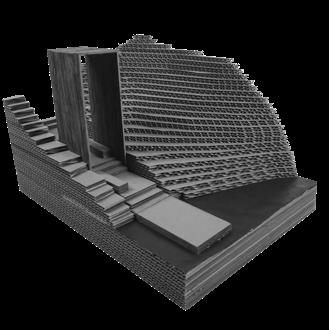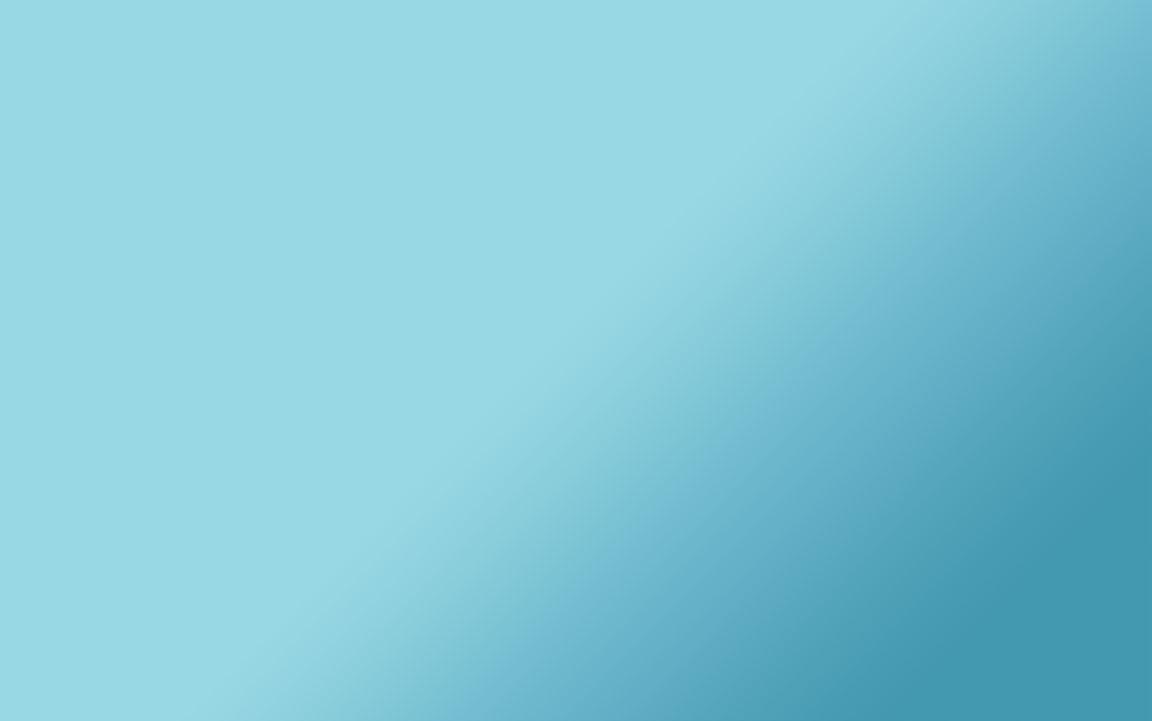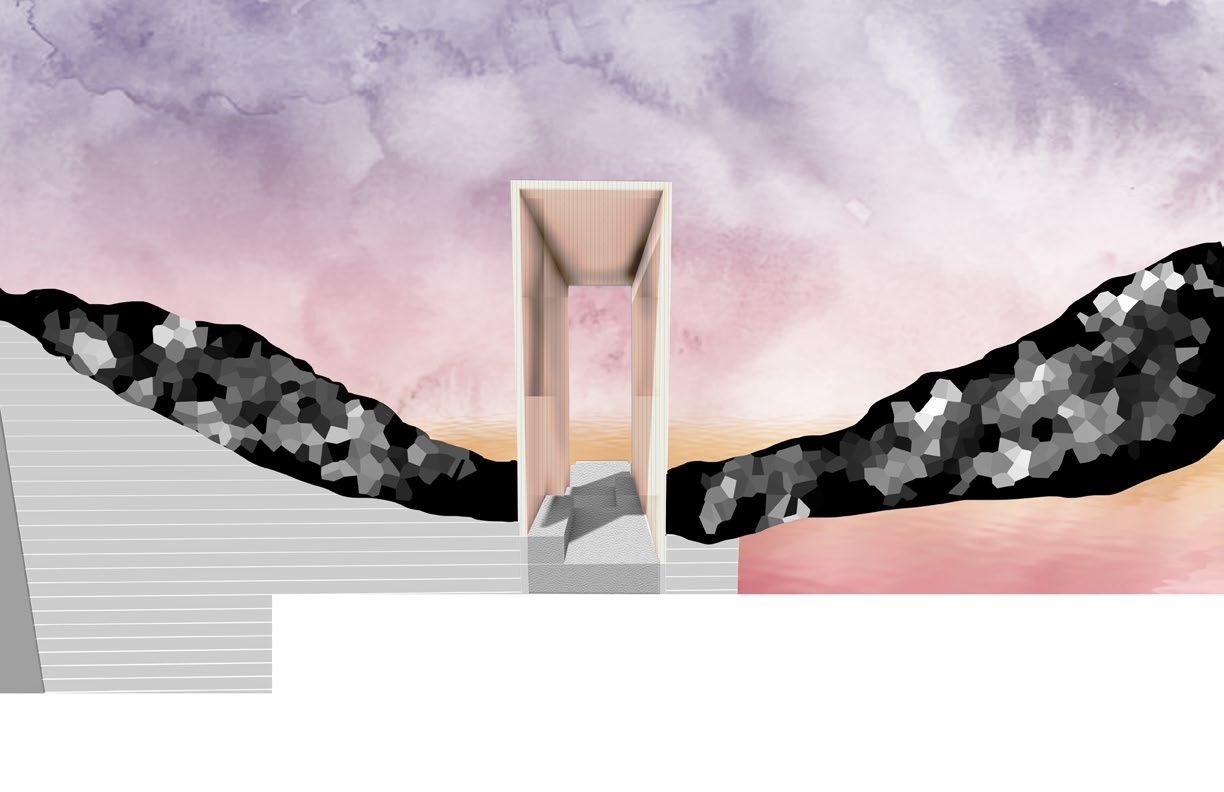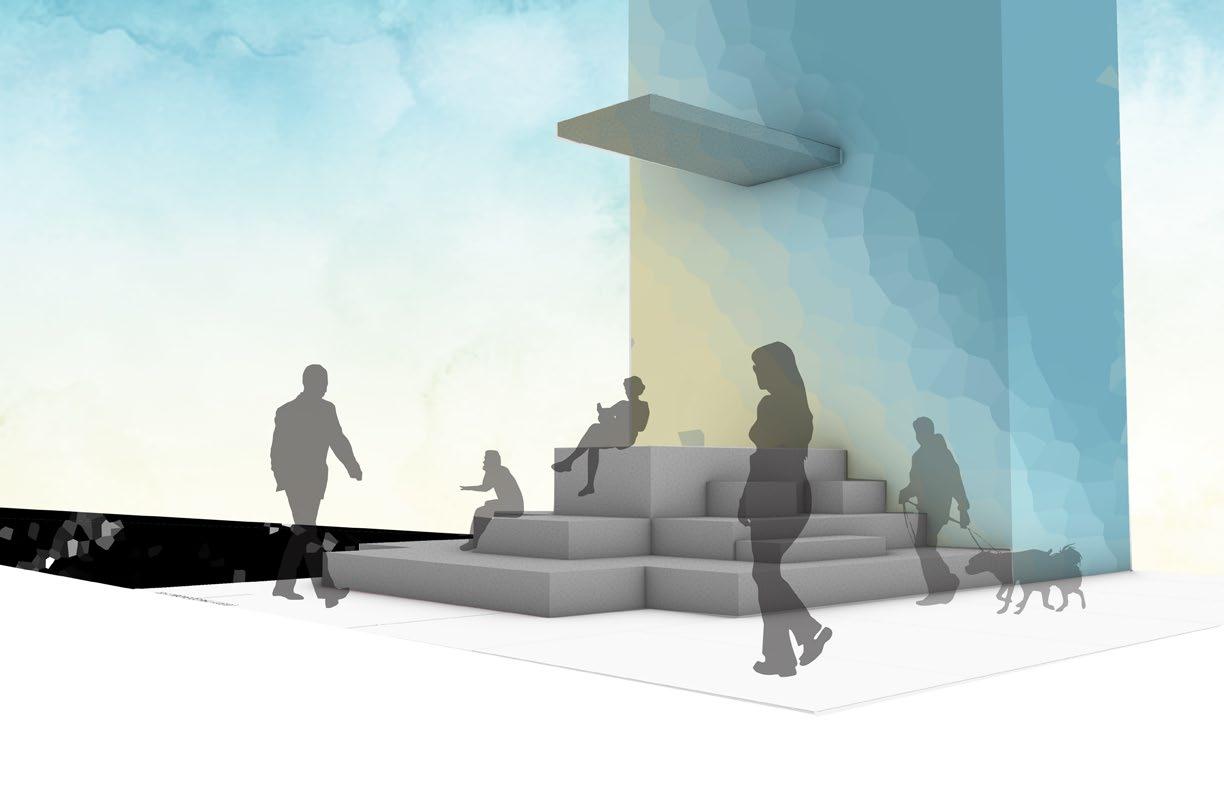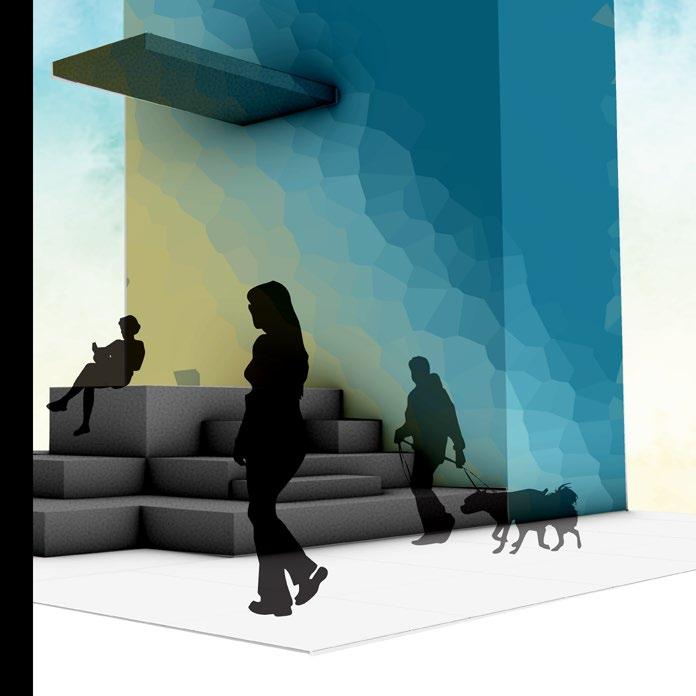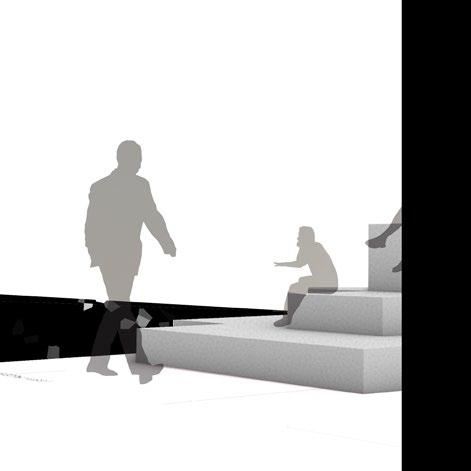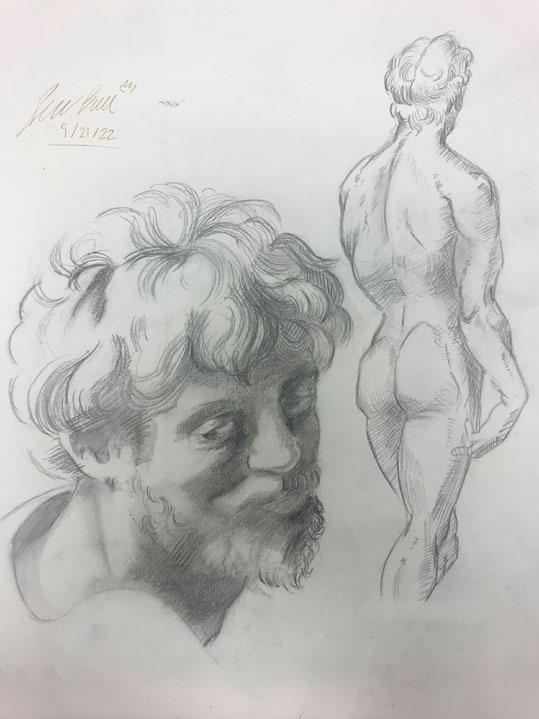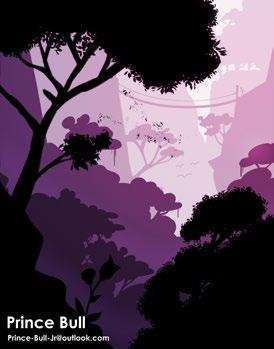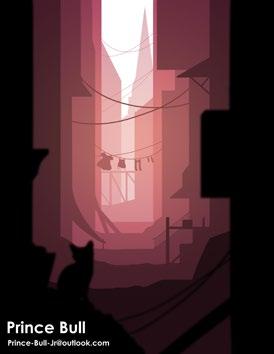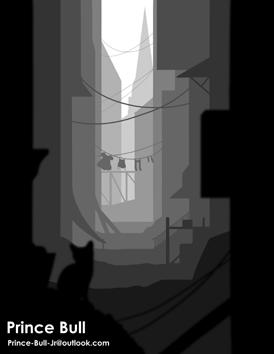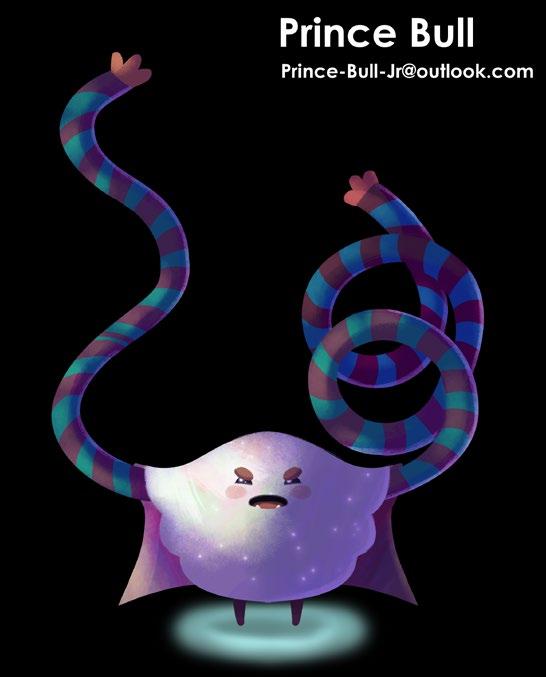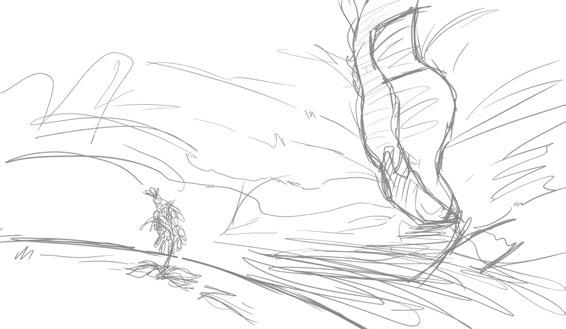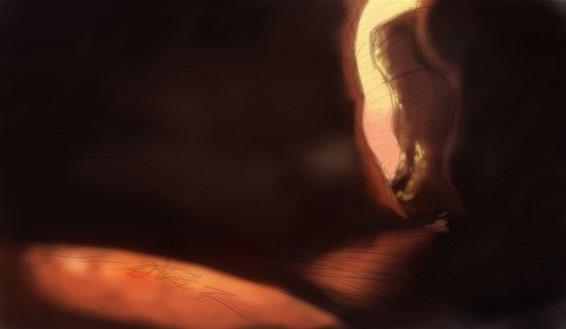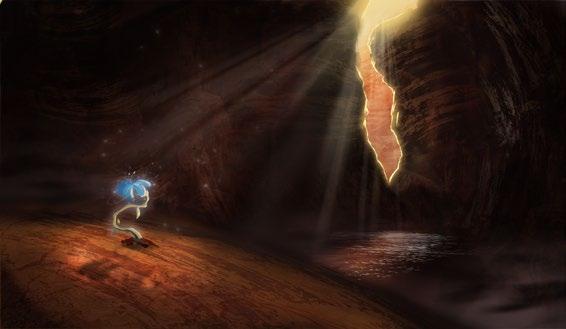PORTFOLIO
Architectural Design & Graphic Design
3 4 10 16 22
Personal Page


Terraine De Jeau Liminal Spaces


Faltenweglich Personal Works


3 4 10 16 22
Personal Page


Terraine De Jeau Liminal Spaces


Faltenweglich Personal Works

I’m a twenty-two-year-old graduate of the Georgia Institute of Technology. For the last four years, I've studied the intricacies of Architecture and Graphic Design to hone my craft, and eventually contribute to something greater.

Although most of my technical skills stem from my education, I hold dearly, many lessons from my Sierra Leonian Descent. In my culture, there is a strong sense of community, where it takes a village to raise a child. To truly learn, is to learn with others as you take steps to grow in tandem.
Architecture and Design at face value aren't putting buildings or art into the site. It's a way to interconnect with the "village" you build within your team, and the communities you wish to impact with a message of comraderie.
The type of designer I strive to be is one that disparages belief that the praxis of working in isolation proves fruitless, as you'll always need someone's guidance at every level.
The aim of this project is to create a sustainable park that promotes eco-friendliness and serves as a model for sustainable urban development.
The park will provide a space for people to connect with nature, engage in outdoor activities, and learn about sustainable living practices.
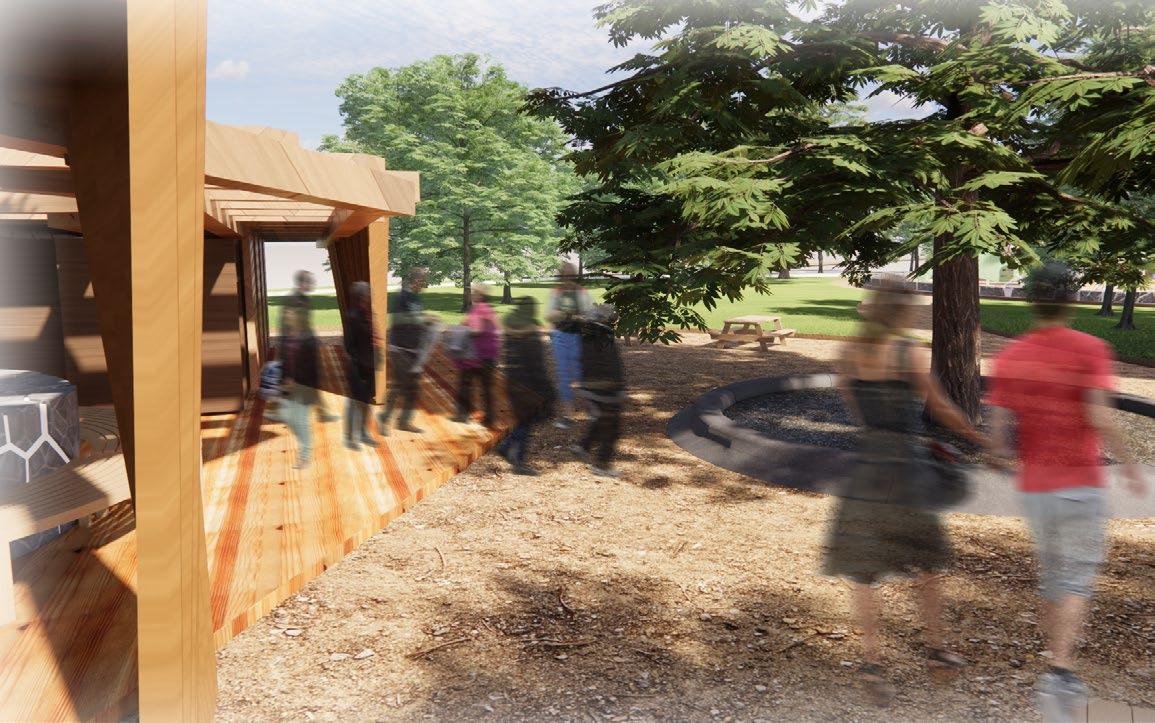
The basic idea behind this project is to use farming to create the ideal environment for optimum plant performance while simultaneously allowing education and physical development. The goal is to create a welcoming environment for people from all walks of life while conveying environmental messages through agriculture.
While the design began as a playground, the concept intended to be different from the usual, mass-produced plastic playground. The desire to maximize the connection with nature and create a sense of freedom was a significant motivator.
A sustainably designed playground that provides a safe and engaging environment for children to be active while promoting an engagement with ecology.
A boundary wall utilizing limestone as it's as it's masonic construct.
Given limestone's durability and resistance towards erosion, it's a sustainable sedimentary rock formed by the accumulation of shells, coral, and other marine debris.
A voronoi inspired structure made primarily of bamboo that's designed for children to climb and play on.
Bamboo is a fast-growing and renewable material that is lightweight, durable, and has a unique cosmetic appeal. It's ability to be harvested at rapid rates, and withstand force makes it a perfect fit, for an interactable structure.
A wooden exterior designed using Teak, a hardwood that is often used for outdoor furniture and decking.
When harvested sustainably, teak is a renewable resource that is resistant to rot and decay.
The centerpiece of the playground set. With a slide that wraps around it's exterior. It's composition of aluminium makes it optimal for use in outdoor environments.
Consisting of several vertical trays, each tier has several holes or pockets that are designed to hold plants, such as herbs, vegetables, or flowers.
This hydroponic system is designed to provide optimal growing conditions for plants, including proper light, temperature, humidity, and nutrients.
Within' this system, Solar Panels provide power for various components of the system, such as water pumps, lighting, and climate control.
Solar panels are a sustainable and environmentally friendly source of energy that can reduce reliance on grid electricity and lower energy costs.
Providing plants with a stable environment to grow in the grow tray facilitates the delivery of nutrient solution to the plants.
The grow tray includes features such as drainage holes which allows excess nutrient solution to drain out. This ensuring that the plants have access to the right amount of nutrient solution.
A self-watering wick is a component of a hydroponic system that provides a consistent supply of water to plants without the need for frequent watering.
A simple and low-cost solution that works by using a wick or absorbent material to draw water from a reservoir into the growing medium where the plants are located.
A water reservoir is a key component of a hydroponic system that holds the nutrient solution used to feed the plants.
Located in a compartment underneath the solar panels, it's designed to hold a specific amount of water, nutrients, and other additives necessary for plant growth. It's additionally effective in capturing fallen rain water as well.

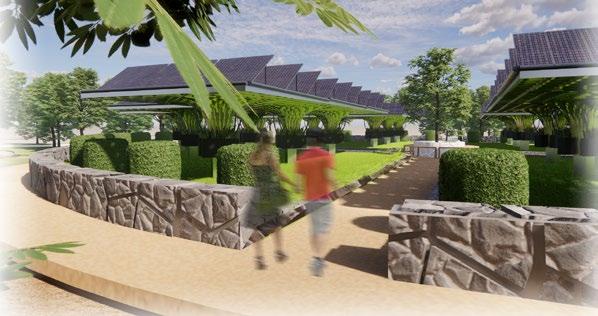

The aim of this project was to design a mobile structure for a public space, which can serve a range of cultural events.
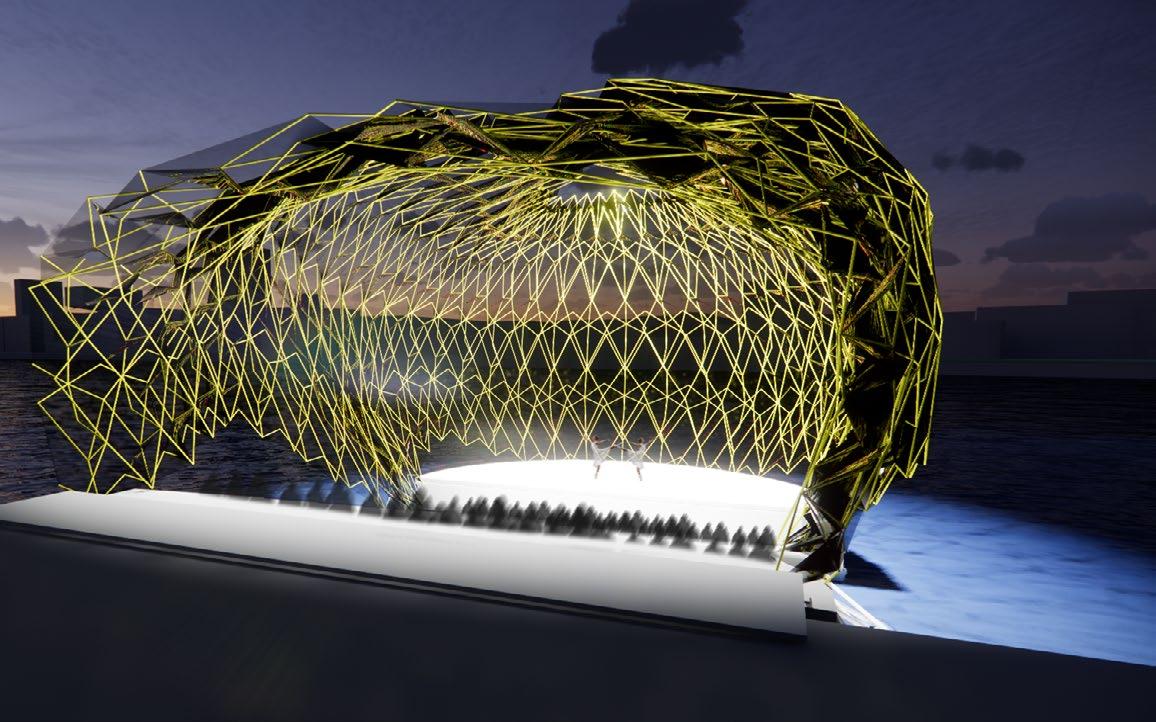
The building should enable multiple event scenarios such as concerts, theater performances, dance performances, fashion shows, exhibitions, workshops and maybe even neighborhood events like a wedding.
The basis of this floating structure, takes inspiration from the Origami concept of Tessalation, an arrangement of shapes closely fitted together, especially of polygons in a repeated pattern without gaps or overlapping.
I wanted to have the tessalation stand out as the most prominent feature.
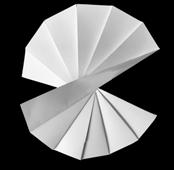
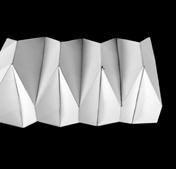
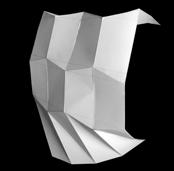


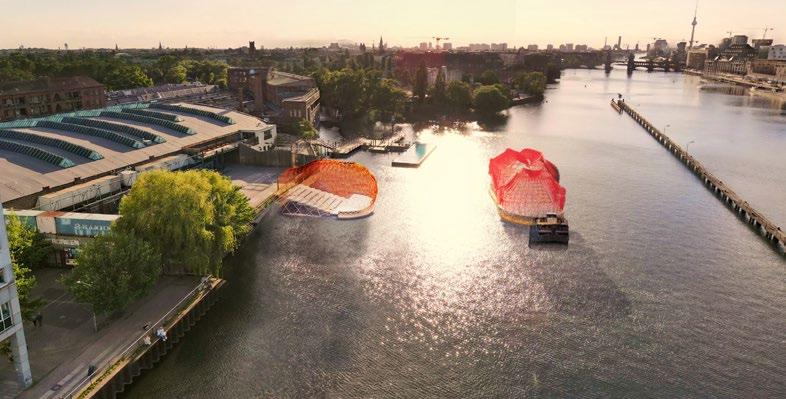
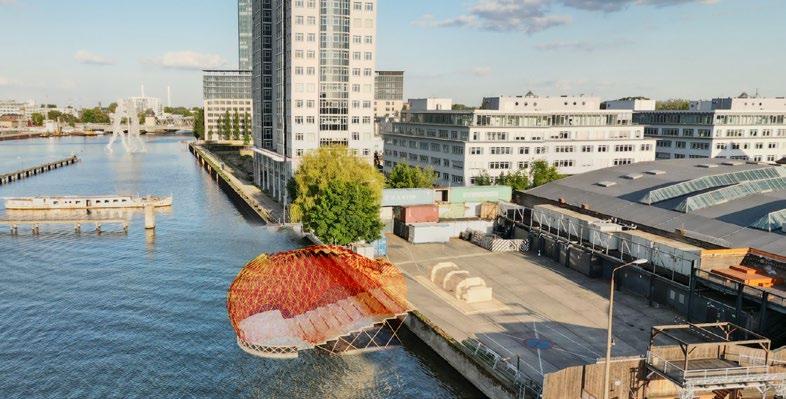
A frame used to provide additional support and rigidity. Without a frame, the fiberglass shell would be prone to bending, flexing, and deforming under load.
The frame helps to distribute the loads placed on the shell more evenly and to prevent the shell from failing under stress.
An inexpesive. and practical material because it is strong, lightweight, and durable.
It is also resistant to corrosion, and can withstand high temperatures and UV radiation.
The main circulation space of the platform, which doubles as a both the seating area and the stage.
The platform is designed to be flexible and adaptable, allowing it to be used for a variety of different events and activities.
Pontoons: Pontoons are large, buoyant structures that can be used to support a platform on the water.
By using a few structural elements, the structure is able to float by the use of four Pontoons.
A safety barrier designed to prevent people from falling into the East Berlin River.
Woven from a strong polypropylene mesh, it's materiality makes able to withstand the weight of multiple humans, with it often being used for cast fishing.
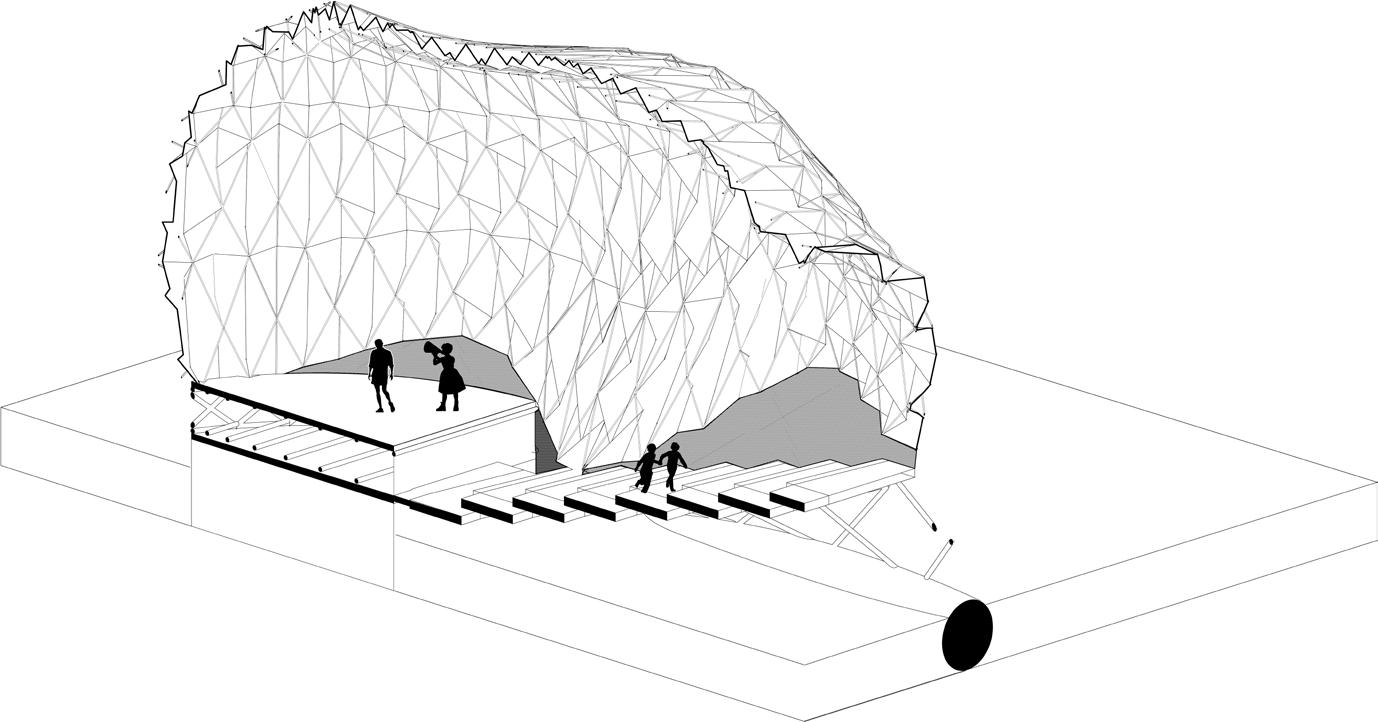
This series of projects, strive to take the concept of liminatlity that aims to create a safe and comfortable environment for people who need a place to rest and recharge.
The space is designed to provide a refuge from the stress and demands of everyday life, allowing visitors to decompress and relax.
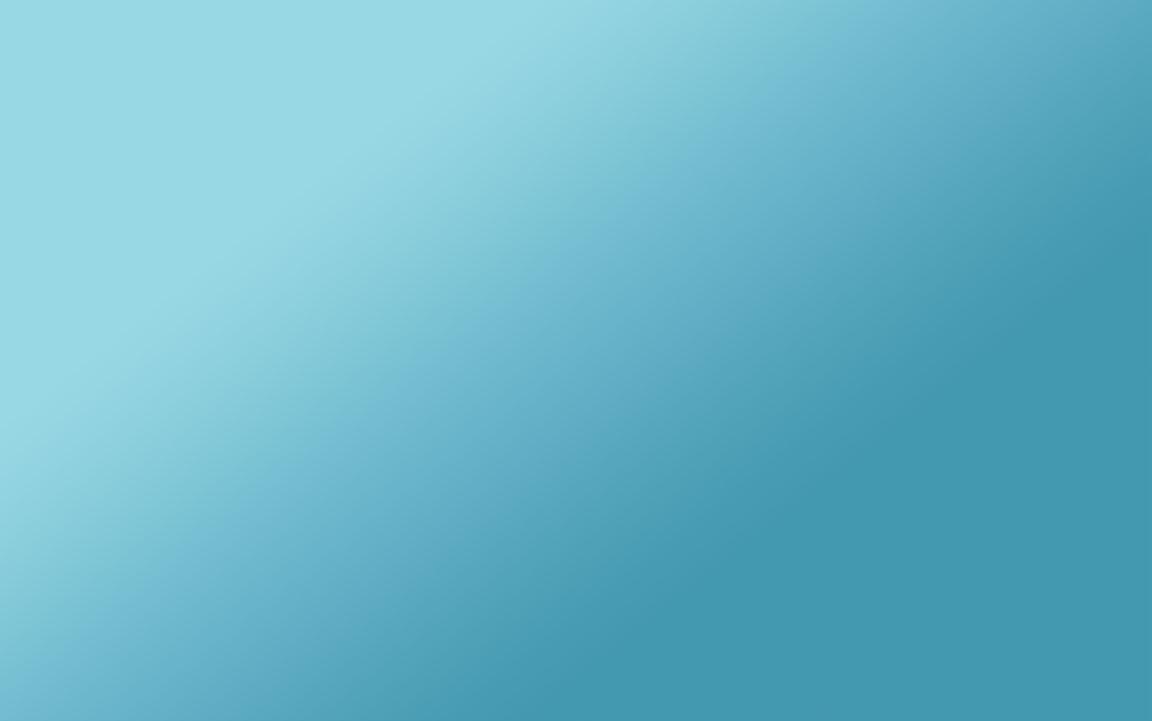
The concept of liminality refers to a state of being in between two established states or conditions. A period of transition where one has left the previous state, but has not yet fully entered into the next one. This can be a physical, social, psychological or cultural transition.
In anthropology, liminality is often associated with rituals and rites of passage, where an individual or a group undergoes a symbolic transformation from one social status to another.
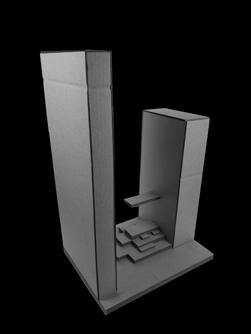
When standing at the edge of a cliff, one can experience a sense of being suspended between two worlds. Within one realm lies the solid ground beneath their feet and in another, the vast expanse beyond the precipice.
When standing on the shore of a lake, the water has no clear beginning or end. An ecosystem that cannot be breached easily by humans to it's full extent, but expands far beyond our comprehension.
When navigating through a city, one can experience a sense of being suspended between the natural world and the built environment, the past and the present, the public and the private, and the local and the global.
The feeling of uncertainty between these two worlds, can create feelings such as awe, fear and excitement. An unknown that is able to place you in a state of reflection, when looking upon the horizon.
The space doesn't end with the shore, it extends far beyond it. An area that feels familiar and simple, yet we know nothing about it's true capacity. A space able to envoke a sense of mystery and reflection about what more can exist.
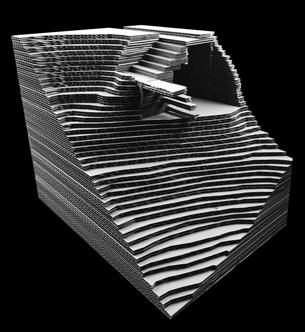
Manmade infrastructure arguably creates creates a complex web of social, economic, and cultural interactions. The liminality can lie within the diverse architecture of the city or with the individuality of it's inhabitants.
